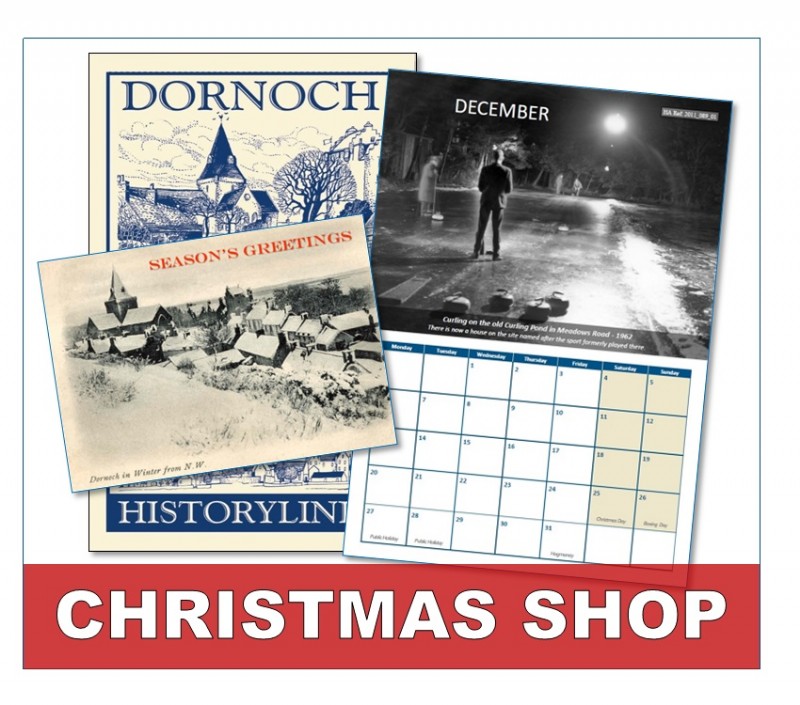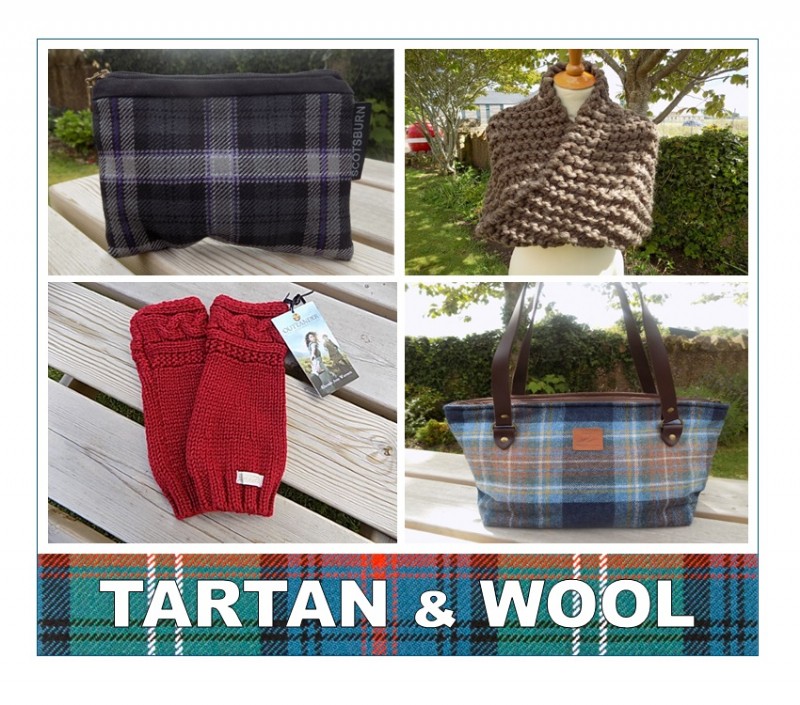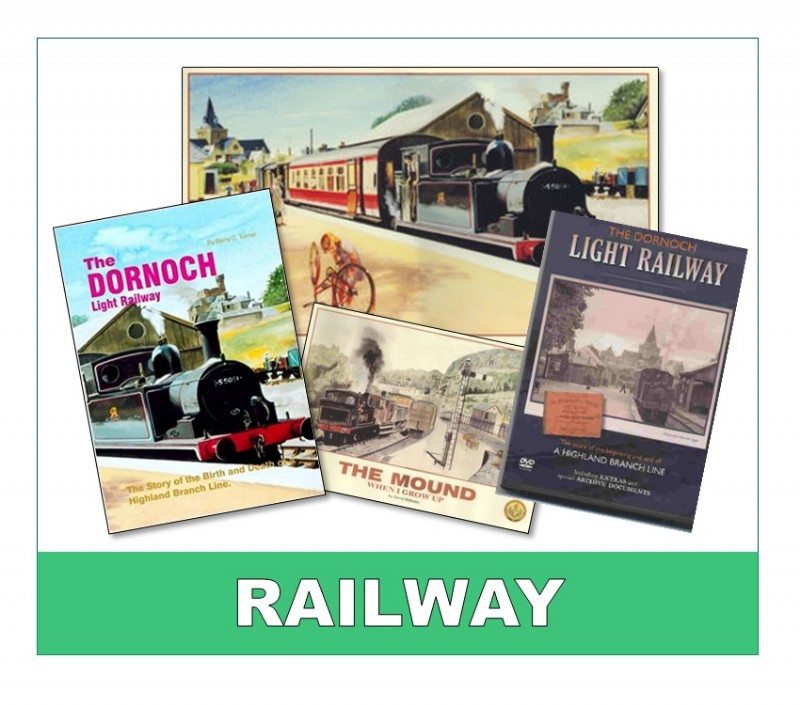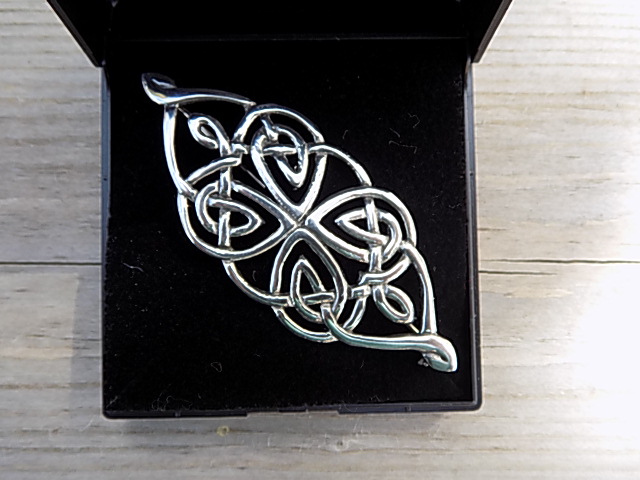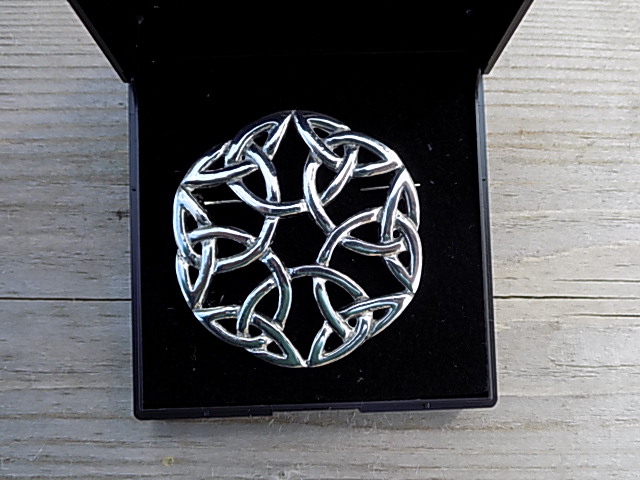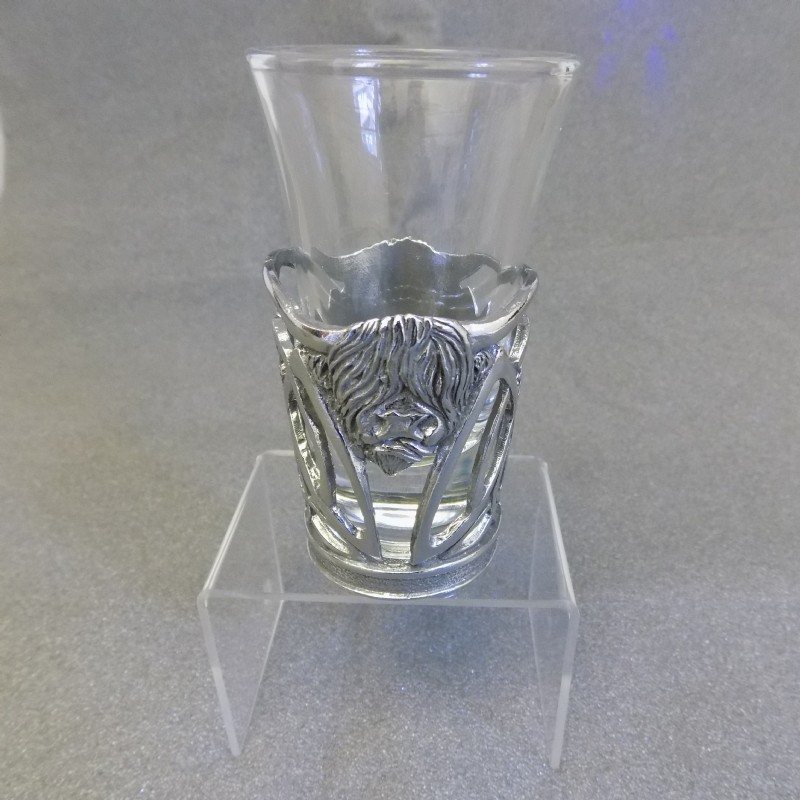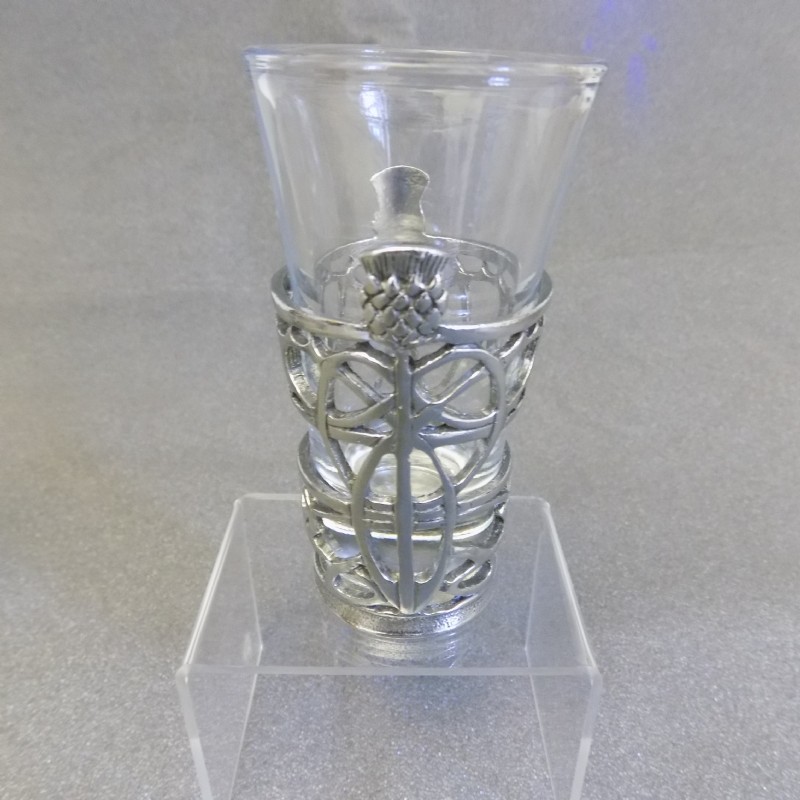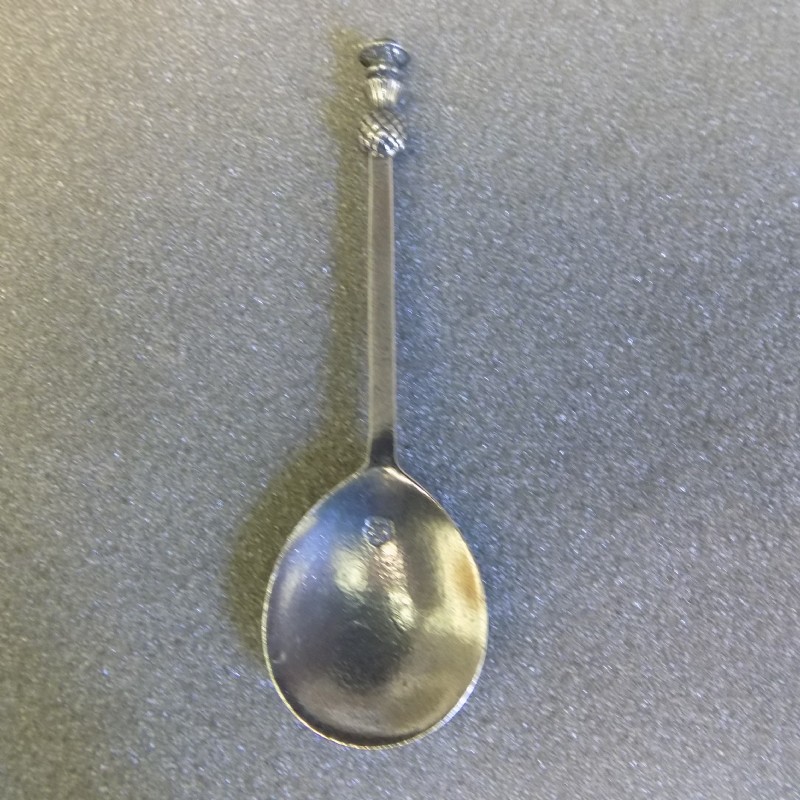
Durrow Knotwork Brooch
A.E. Williams

Width 4cm.
Boxed.
Not currently available.
8th C Open Knot Brooch
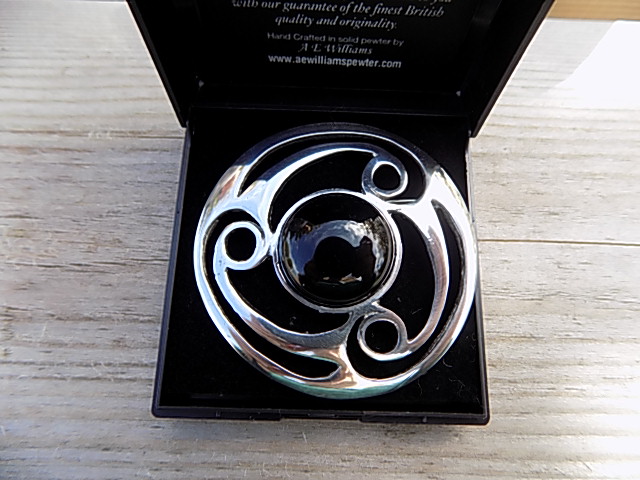
Handmade by A.E. Williams.
Width 4cm.
Boxed.
Not currently available.
Interlaced Knot with Stone Pewter Brooch
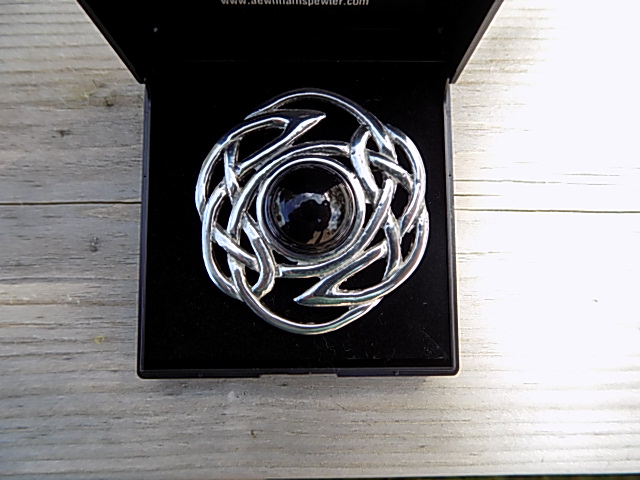
Handmade by A.E. Williams.
Width 4cm.
Boxed.
Not currently available.
Dunfallandy Knot Pewter Brooch
Dunfallandy Knot pewter brooch.
Handmade by A.E. Williams.
Width 6cm.
Boxed.
Not currently available.
The Symbol of Eternity Pewter Brooch
The Symbol of Eternity pewter brooch.
Handmade by A.E. Williams.
Width 4cm.
Boxed.
Not currently available.
Open Swirl Pewter Brooch
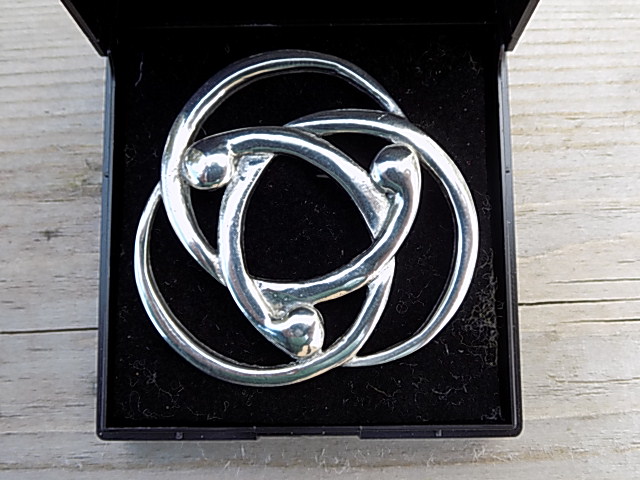
Handmade by A.E. Williams.
Boxed.
Not currently available.
Triple Spiral Pewter Brooch
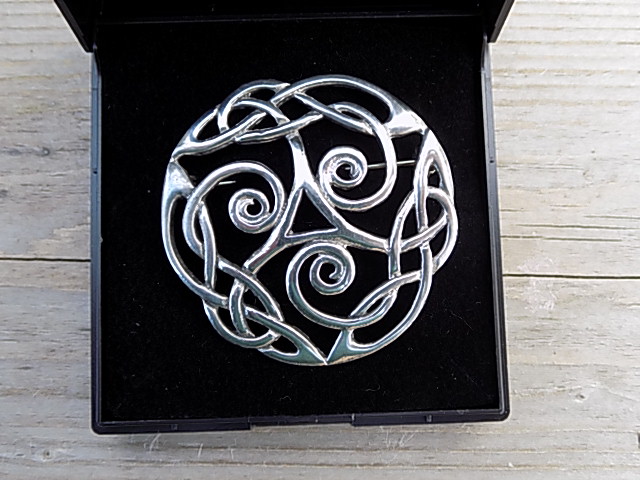
Handmade by A.E. Williams.
Width 4ch.
Boxed.
Not currently available.
Symbol of Eternity Pewter Brooch with Stone.
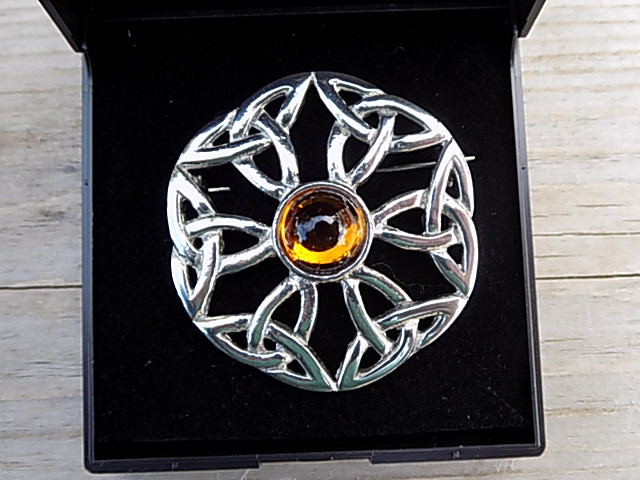
Handmade by A.E. Williams.
Width 4cm.
Boxed.
Not currently available.
Shot glass - Highland cow
A. E. Williams
A shot glass nestled in a hand-crafted pewter sleeve
with Highland cow design.
Not currently available.
Shot glass - stag
A. E. Williams

Not currently available.
Shot glass - thistle
A. E. Williams
A shot glass nestled in a hand-crafted pewter sleeve with thistle design.
Not currently available.
Spoon - Mary Queen of Scots
Westair Reproductions
A Mary Queen of Scots seal top spoon.
Seal top spoons were very popular from about 1560 until 1670. During this time it was customary when travelling to carry personal cutlery as well as writing materials. Most letters and documents were sealed with wax and it was for this purpose that spoons were often manufactured with the owner's seal on the end of the handle.
The seal on this reproduction spoon is similar to the coat of arms on a coin struck to commemorate Mary's marriage to Lord Darnley in 1565. The spoon is also decorated with the thistle of Scotland.
length: 10 cm
Not currently available.
Spoon - Roman
Westair Reproductions
A Roman Spoon
Wealthy Romans loved to eat fancy food and often threw lavish dinner parties and 
This spoon is a reproduction of one that would have been owned by a wealthy Roman. It has a panther in front of a small 3-branched tree decorating the bowl. It was used in the 3rd and 4th centuries at cult feasts that were probably associated with the Roman god, Bacchus, as the panther was closely associated with him.
The pointed handle would have been used to extract meat from bones, to eat
snails, or to open and eat shellfish.
length: 10cm
Not currently available.
Spoon - Tudor
Westair Reproductions
A Tudor spoon
During the Tudor period, tableware made from pewter would have been used
in the homes of the wealthy, such as Hampton Court Palace, and by officers on
ships. 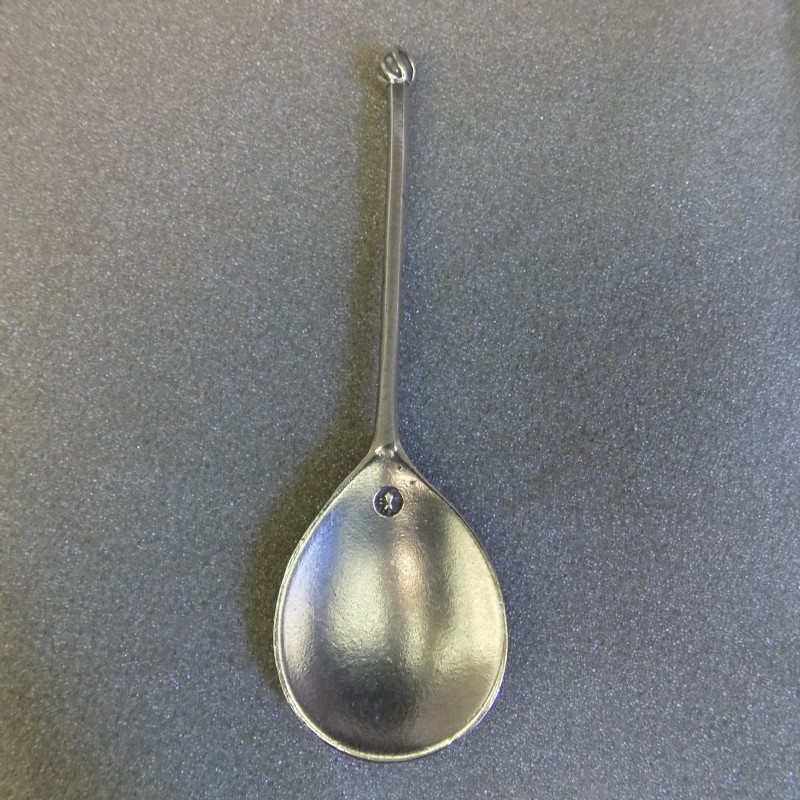
tankards and spoons.
Pewter spoons were sometimes engraved with the maker's mark or initial, or with
the owner's family coat of arms, emblem or initial. Owning a pewter spoon was a
way of proclaiming one's wealth and status in society. Some people carried their
own spoons about with them.
This reproduction spoon is based on a Writhen or twisted knop spoon. The
bulb-shaped knop on top of the spoon was formed from several twisted strands
of wire, thick in the middle and smaller at the ends. The maker's, or owner's,
fleur-de-lis mark is stamped onto the top of the bowl. The original was made in
London in 1500.
length: 15cm
Not currently available.
Torque bangle - ball
A. E. Williams
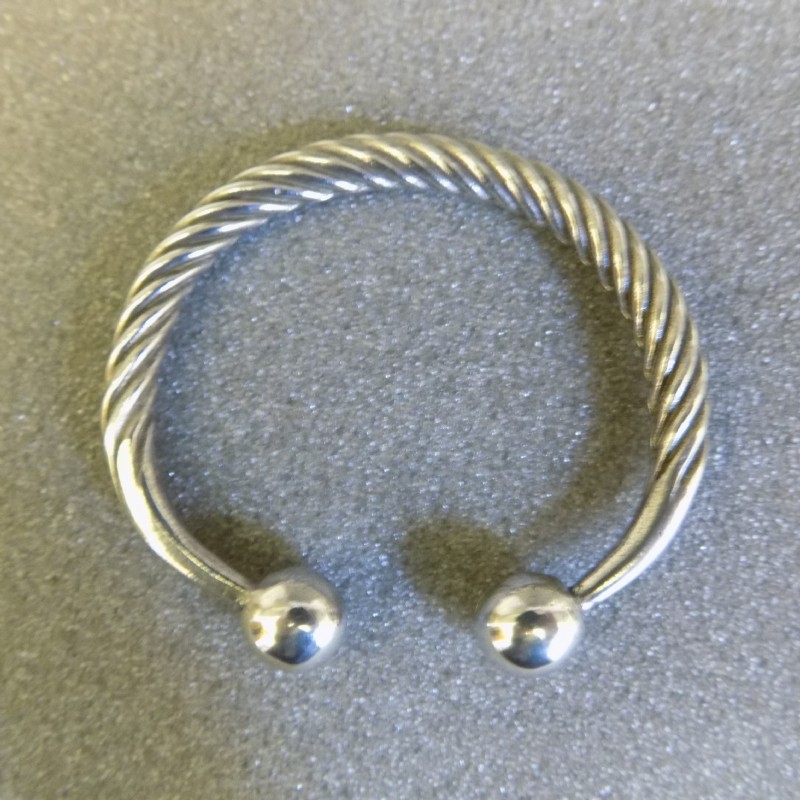
Not currently available.
Scarf Ring
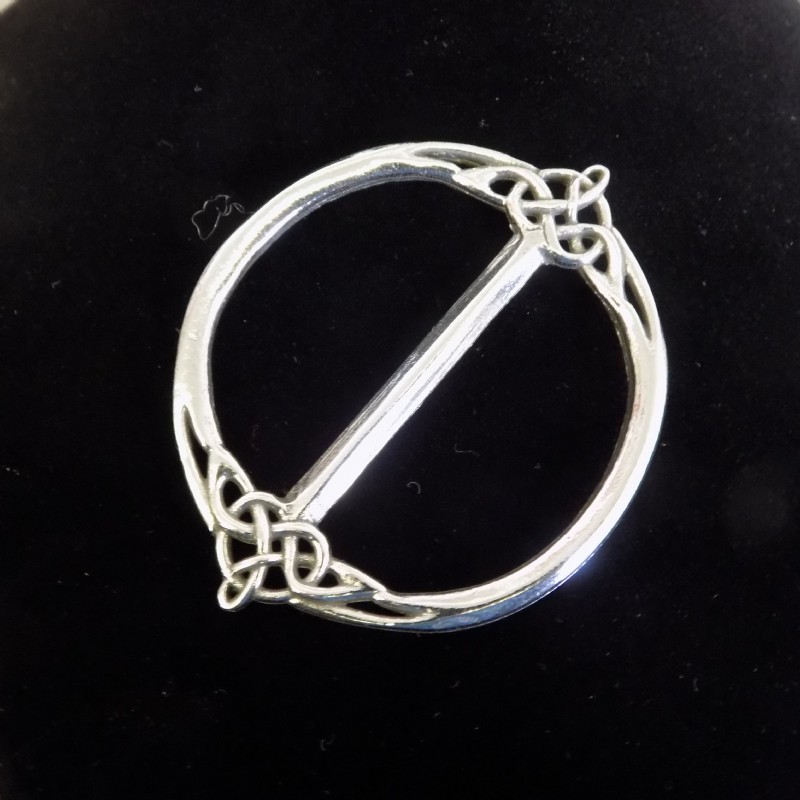
Comes boxed.
Width 7cm
Not currently available.
Torque bangle - thistle
A. E. Williams
A hand-crafted torque bangle with end-stop thistle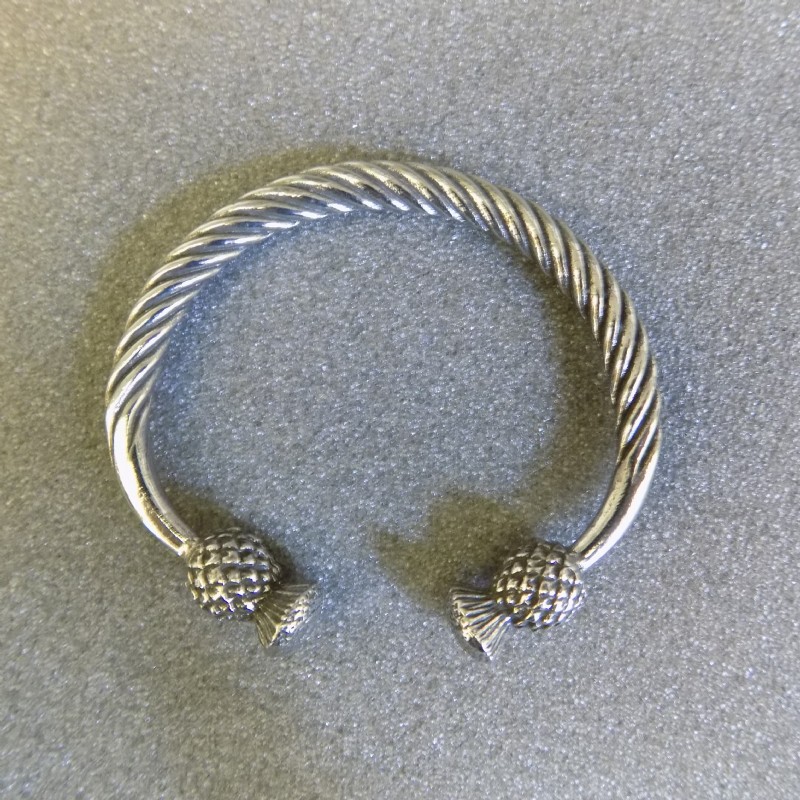
Not currently available.
Scarf Ring
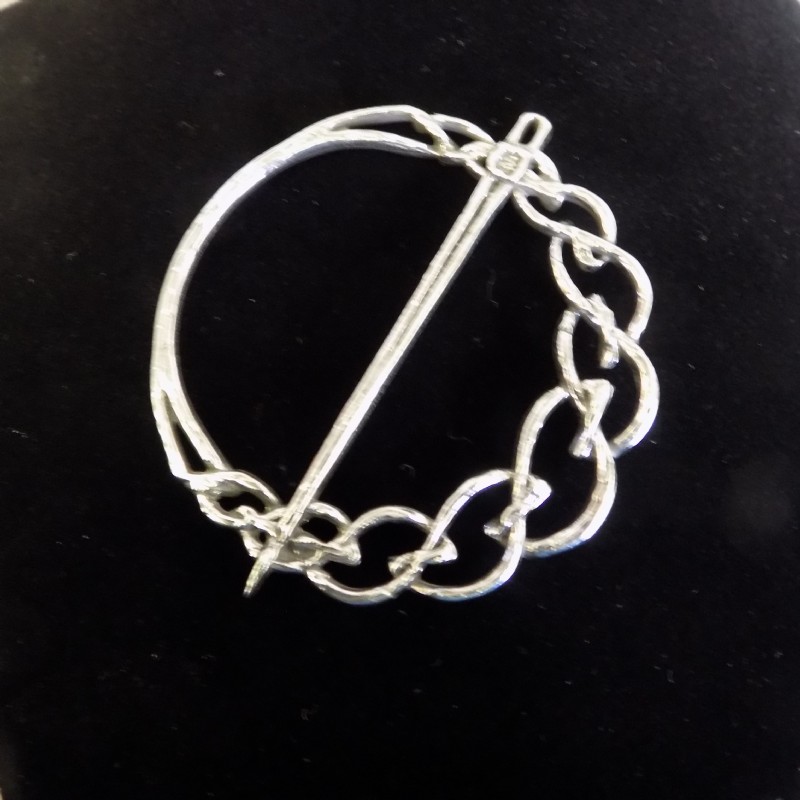
COmes boxed. Width 7cm.
Not currently available.


